Singapore wages war on invasive plant, animal species that exact costs on cities worldwide
Sign up now: Get ST's newsletters delivered to your inbox
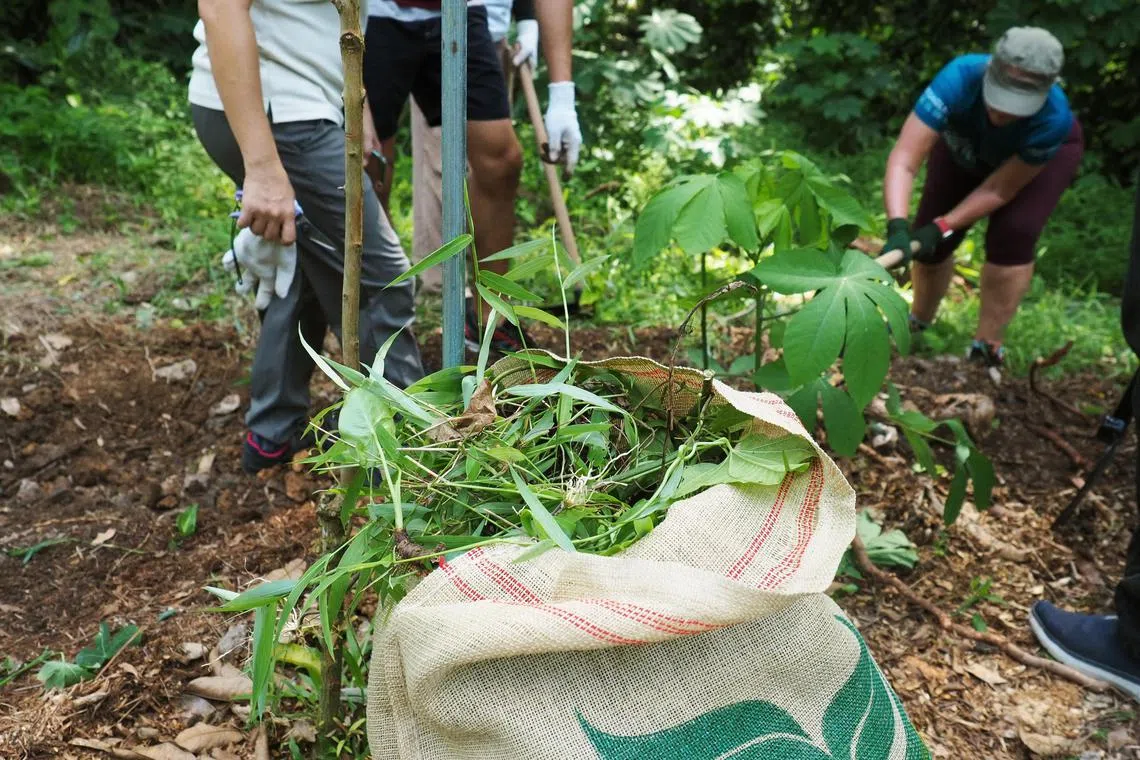
Volunteers and staff of WWF-Singapore getting rid of foreign weeds that were entangling trees along the Rail Corridor on Sept 15.
PHOTO: WWF-SINGAPORE
Follow topic:
SINGAPORE – On the morning of Sept 15, 12 people combed a stretch of the Rail Corridor to snip away fast-growing creepers and dig up tubers that could suffocate native trees in the forest.
Armed with small hoes and pruning shears, the volunteers and staff of WWF-Singapore got rid of eight gunny sacks’ worth of foreign weeds that were entangling trees in 1½ hours.
The invasive climbers included the notorious zanzibar yam or batman plant – named after its distinct bat-shaped leaves – and the mile-a-minute barbed vine.
“The zanzibar yam was introduced before 1928 for experimental purposes in the Singapore Botanic Gardens. However, it has spread to other nature areas due to its aggressive growth,” said Ms Jayasri Lakshminarayanan, head of education and outreach at environmental protection organisation WWF-Singapore.
She added: “The plant produces underground tubers and grows rapidly, covering the canopy of large trees. This prevents the trees from getting nutrition from the soil and sufficient sunlight, greatly affecting the regeneration of our forests.”
In partnership with the National Parks Board (NParks), WWF-Singapore’s work on managing invasive weeds at the Rail Corridor will be a monthly effort.
Rescuing forests from these weeds is one way the community and the authorities have been trying to battle harmful invasive animals and plants that compete with native life and threaten the health and well-being of people.
Around the world, mankind has introduced more than 37,000 non-native or alien species of animals, plants and microbes as a result of interconnectivity and human activities, said a major report by the Intergovernmental Science-Policy Platform on Biodiversity and Ecosystem Services (IPBES) in early September.
In the most comprehensive assessment on invasive species to date, the leading global body on biodiversity science revealed that of the 37,000, more than 3,500 of these are harmful invasive species that have cost the global economy at least US$423 billion (S$576 billion) a year.
The major economic costs come from the loss of food supply when invasive species attack food crops and displace native fisheries, and from disease-carrying invasive mosquitoes that can lead to epidemics such as malaria, dengue fever, chikungunya, Zika and yellow fever.
The Aedes aegypti mosquito, for instance, which spreads dengue and Zika, is an invasive species in South-east Asia as it hailed from sub-Saharan Africa.
“There are many pests and diseases that move around with trade and people movement, such as the lumpy skin disease in cattle and African swine fever (that) have spread through South-east Asia with devastating effects on livestock agriculture,” said Dr Andy Sheppard, chief research scientist for biosecurity at Australia’s national science agency Csiro, who co-led a chapter of the major report.
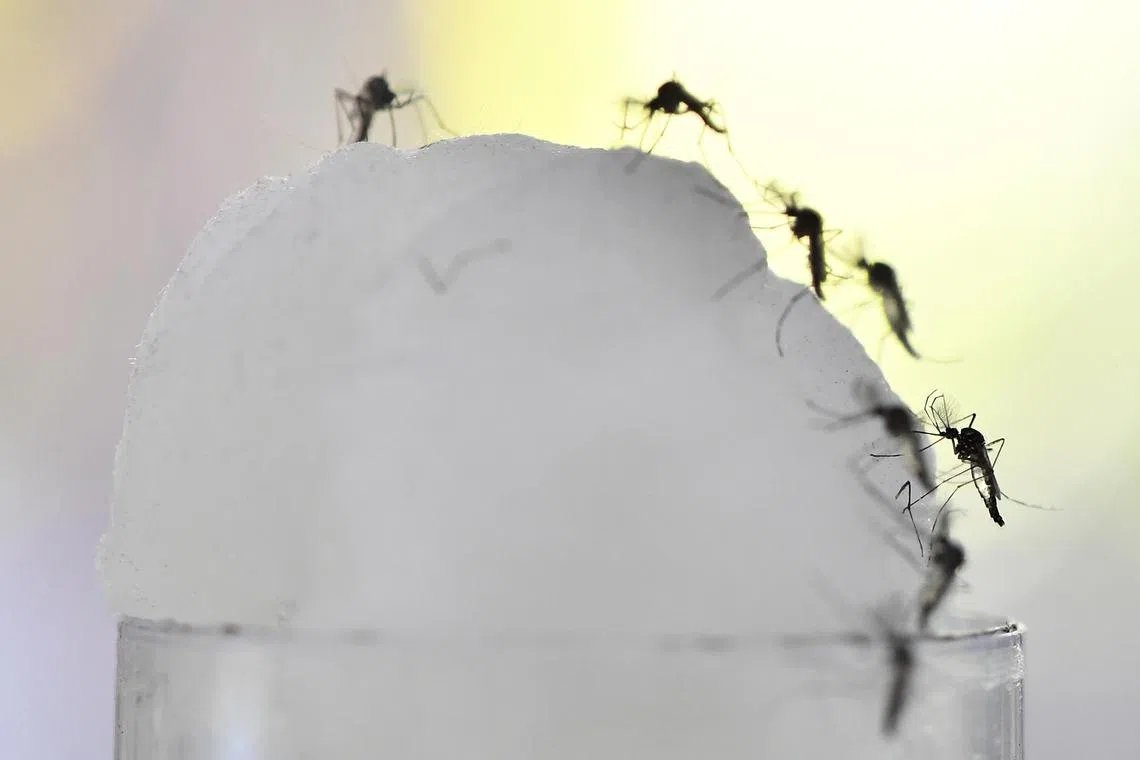
The Aedes aegypti mosquito is an invasive species in South-east Asia that hails from sub-Saharan Africa.
ST PHOTO: LIM YAOHUI
In Singapore, a 2021 study published in NeoBiota, a scientific journal focused on alien species, calculated the economic costs of invasions at US$1.72 billion since 1975. Most of the costs were linked to resource loss, healthcare spending and vector-control measures taken over the years to fight dengue.
The National University of Singapore (NUS) Lee Kong Chian Natural History Museum’s head, Associate Professor Darren Yeo, noted that the economic costs of invasive species and how they affect humans are likely the most tangible impact of invasions in Singapore.
He pointed to the costs of anti-bird nettings at hawker centres, tree pruning and “no feeding of birds” signs to keep the javan myna and pigeons – both of which are non-native – at bay. The house crows that hail from South Asia are known to attack people occasionally .
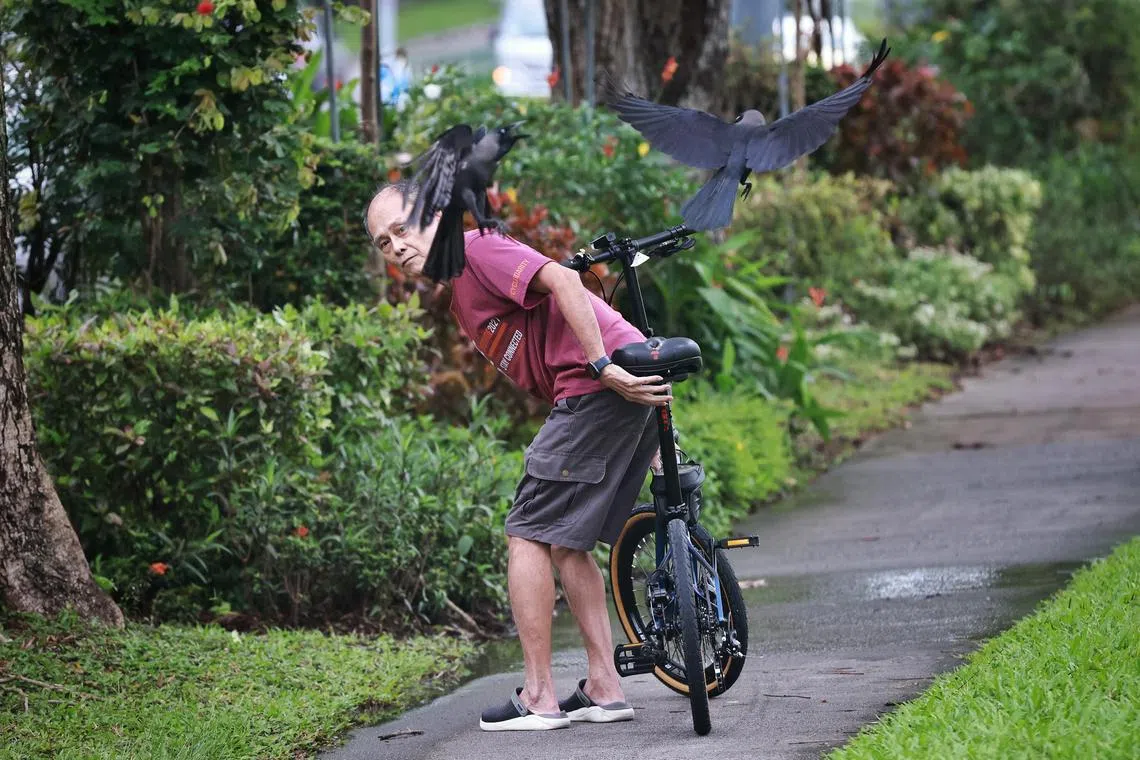
Residents and passers-by at Block 110 Bishan Street 12 had to deal with a crow menace in February 2023. The house crows hail from South Asia.
PHOTO: ST FILE
And one thing is common among many of these invasive creatures – they thrive in urban environments. This is mainly because invasions are driven by human activity, and artificial environmental conditions are favourable to some species.
Numbering more than a hundred thousand, the javan myna, for example, has dominated the urban landscape here. Native to the Indonesian islands of Bali and Java, the black birds were introduced to Singapore around 1920 through the songbird trade.
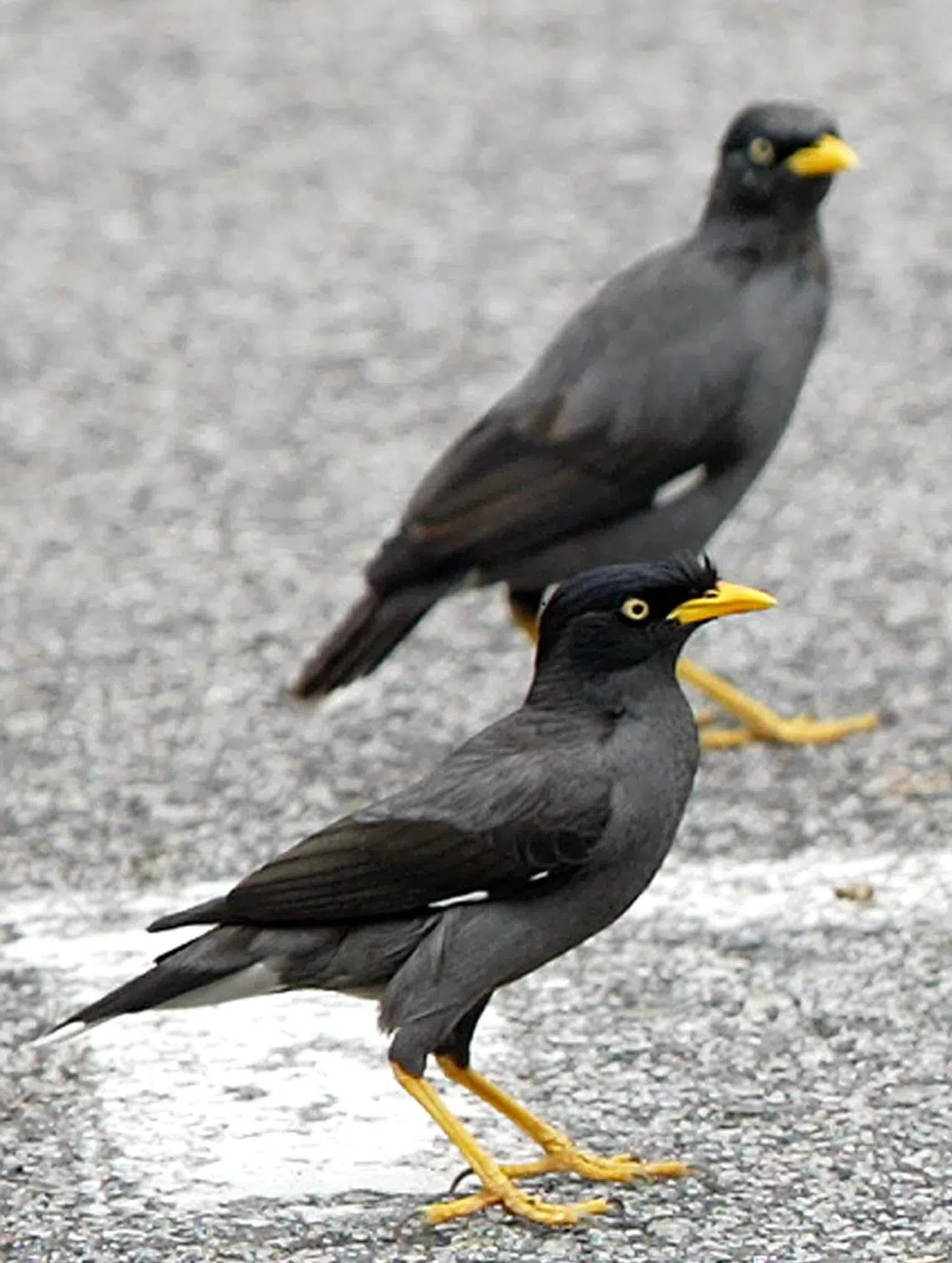
The javan myna has dominated the urban landscape here.
PHOTO: ST FILE
Pet escapees and releases established the wild population, which eventually crowded out the native oriental magpie robin that was formerly widespread in Singapore, and pushed the common myna to rural areas.
Similarly, Singapore’s reservoirs and urban ponds are hot spots for non-native aquatic life such as the motoro stingray, arowana and the giant snakehead (toman) fish.
In 2020, a checklist published in the Raffles Bulletin Of Zoology recorded 123 species of non-native freshwater fish in the inland waters of Singapore.
Prof Yeo said: “Non-native species are basically introduced by humans, either intentionally or unintentionally. Many of our non-native freshwater fishes were probably released first as unwanted pets.”
Since 2006, NParks and other organisations have been part of Operation No Release, an annual campaign discouraging the releasing of animals and unwanted pets such as the red-eared terrapin into parks and water bodies.
The campaign efforts are usually stepped up during the Vesak Day period to discourage devotees from conducting mercy releases. According to media reports on Sunday, a man had bought 30 live fishes – including seabass and tilapia – and released them into a canal in Ghim Moh on Sept 21.

Singapore’s reservoirs and urban ponds are hot spots for non-native aquatic life such as the motoro stingray (pictured), arowana and the giant snakehead fish.
PHOTO: LIANHE WANBAO READER
What reassures ecologists, however, is that native habitats such as the protected nature reserves are mostly untouched by invasive species. Non-native freshwater species tend not to favour such habitats and forests because the water temperature is lower there and the water bodies are more acidic, which are favourable conditions for native fish and animals, said Prof Yeo, who is also a faculty member at the National University of Singapore’s Department of Biological Sciences.
“These habitats are like a stronghold, a refuge for native flora and fauna... Our forests so far appear to be quite resilient to invasive species,” he added.
“But that’s not to take away the possibility that some of these invasive species may cause a problem to our native species. They are all around in the urban areas and we have small forested areas. That means they are constantly knocking at the door,” warned Prof Yeo.
The reservoir-dwelling red-claw crayfish, for instance, has crawled its way into some wild streams where three species of threatened freshwater and swamp crabs – not found anywhere else in the world – may reside. Larger than the crabs, the crayfish from Australia could outcompete and prey on the endemic crabs, said Prof Yeo.

The reservoir-dwelling red-claw crayfish, which comes from Australia, has crawled into some wild streams, leading to fears that they may outcompete and prey on some native species.
PHOTO: ZENG YIWEN
But things are looking up for some of the crabs, which have been part of captive-breeding conservation programmes for about a decade.
And such species recovery efforts – alongside the conservation of key habitats, forest restoration and habitat enhancement – help to maintain healthy ecosystems, which is a key strategy in managing species invasion, said NParks group director of international biodiversity conservation Lim Liang Jim.
“It is easier for species to become invasive in impaired ecosystems – those with low inherent biological diversity, environmental quality and limited connectivity,” he added. NParks also takes a three-pronged approach
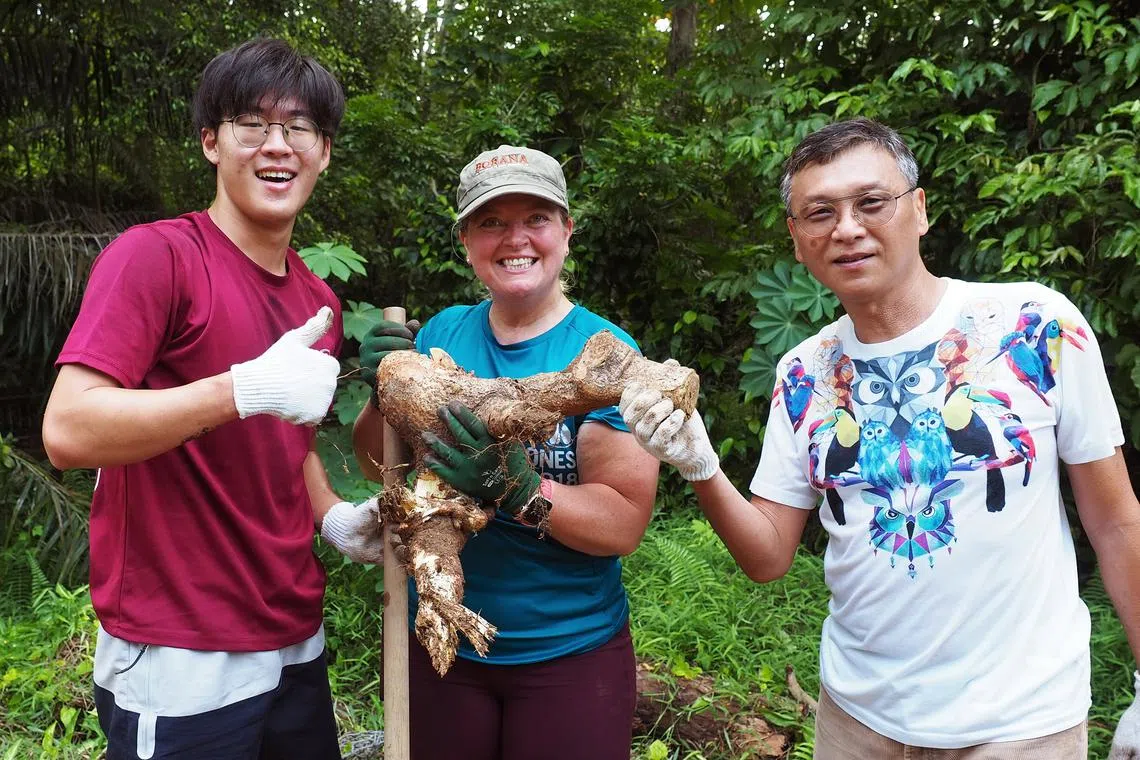
Volunteers (from left) Gabriel Heng, Sally Leonard and Allan Koh with a tuber of the invasive zanzibar yam dug out along the Rail Corridor.
PHOTO: WWF-SINGAPORE
The IPBES report mentioned that preventing invasion is the best and most cost-effective solution, especially for marine and connected water systems, where attempts at eradicating or containing invasive species have mostly failed.
At sea, invasive marine life such as algae and mussel larvae are often transported beyond their native habitats through ships’ ballast tanks.
In 2017, Singapore ratified the 2004 International Convention for the Control and Management of Ship’s Ballast Water and Sediment, which requires ships to eliminate aquatic organisms and pathogens before releasing their ballast water.
Eradication is another solution, and, when necessary, culling is carried out as well, which is often difficult for many to stomach.
In late 2022, a number of red-breasted parakeets, which tend to cluster in the hundreds in Choa Chu Kang, had to be captured and put down , alongside other non-native birds .
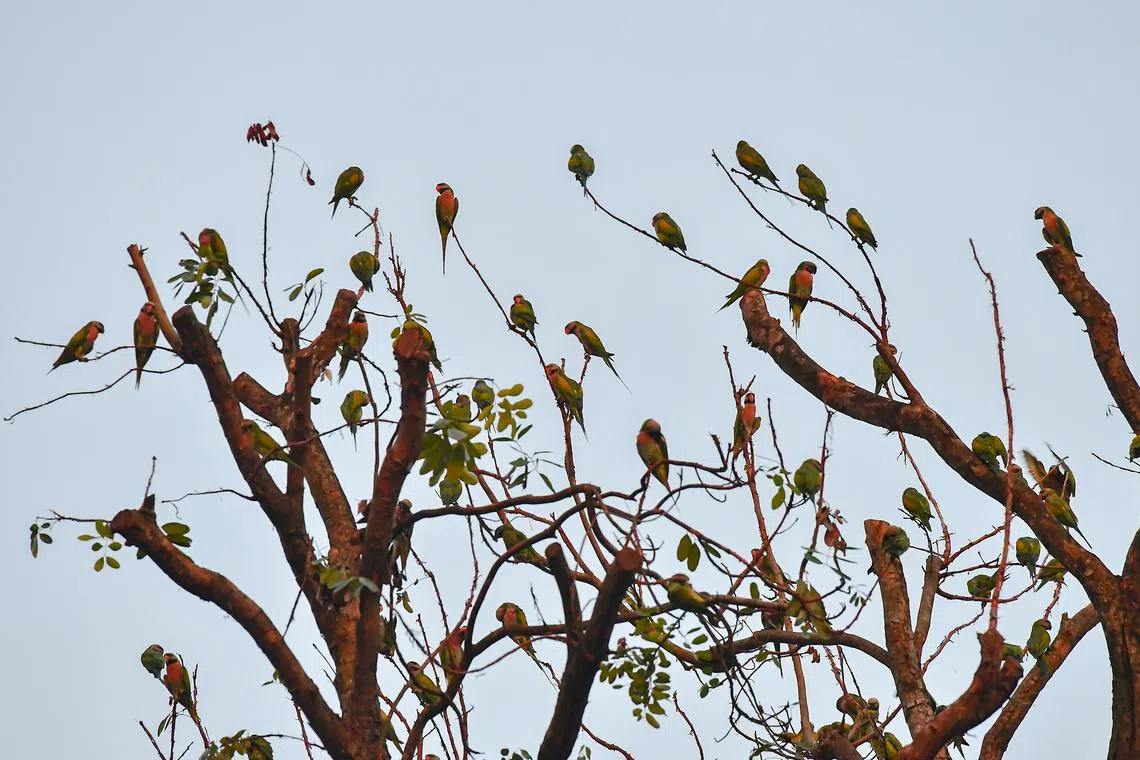
Large numbers of red-breasted parakeets resting on trees near the junction of Choa Chu Kang Avenue 4 and Choa Chu Kang Way on May 30, 2021.
ST PHOTO: LIM YAOHUI
Introduced through the pet trade in the 1940s, the red-breasted parakeets have, over time, spread across the island. At some areas monitored by the Nature Society (Singapore), the number of native long-tailed parakeets has appeared to decline, possibly due to competition for nesting resources, said Dr Yong Ding Li, the society’s coordinator for the annual parrot census.
At the IPBES media briefing in Germany on Sept 4, reporters had asked about groups feeling empathy for invasive animals and the ethical considerations behind culling.
Dr Sheppard responded that the decision to eradicate has to come from the affected community, and that options to minimise suffering are outlined in the report.
“It’s a huge challenge to make a decision to destroy a species to save a species. But if the impact of doing nothing is that a species goes extinct, obviously that is a moral challenge,” he said.
Dr Yong added: “Culling is often a logical way to quickly manage invasive species perceived to be impacting native ones and ecosystems. But the context and considerations involved means it is never so straightforward.”


